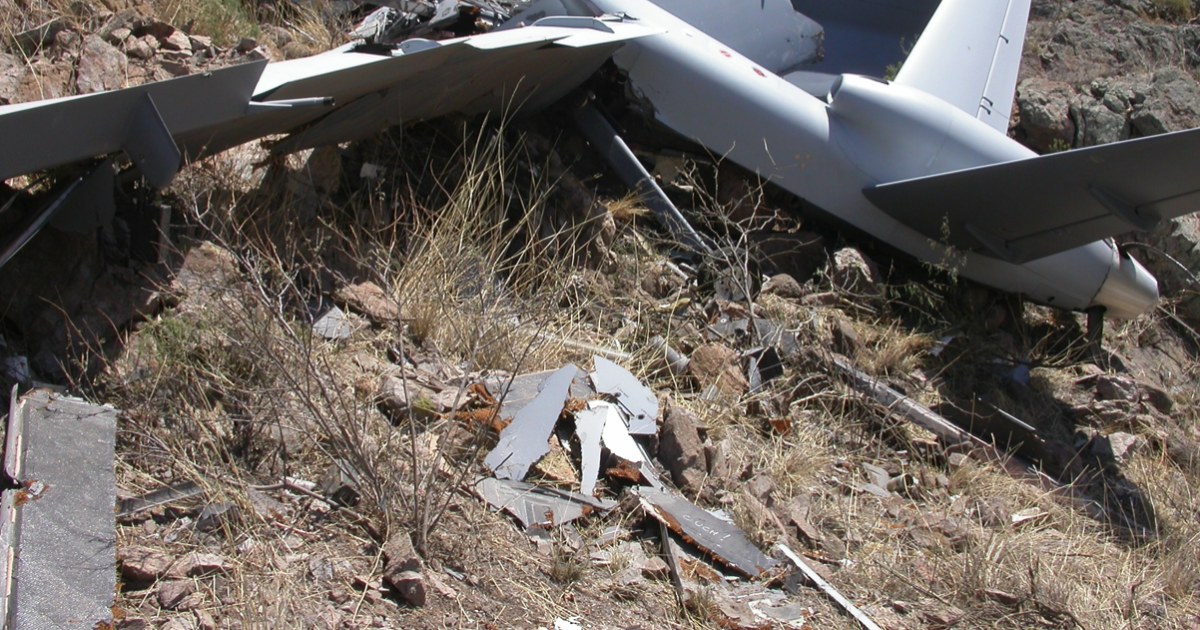Drone crash in Paris – the words alone conjure images of chaos and intrigue. This incident, however, offers more than just headlines; it provides a valuable case study in drone safety, regulation, and public perception. We’ll delve into the specifics of what happened, exploring the potential causes, the response, and the long-term implications for drone use in the city of lights.
Prepare for a deep dive into this fascinating event.
We’ll examine the technical aspects of the drone itself, the pilot’s actions (or lack thereof), and the environmental conditions that may have played a role. We’ll also look at the official response, the media coverage, and the resulting impact on public opinion regarding drone technology. By the end, you’ll have a comprehensive understanding of this significant event and its broader implications.
Incident Details
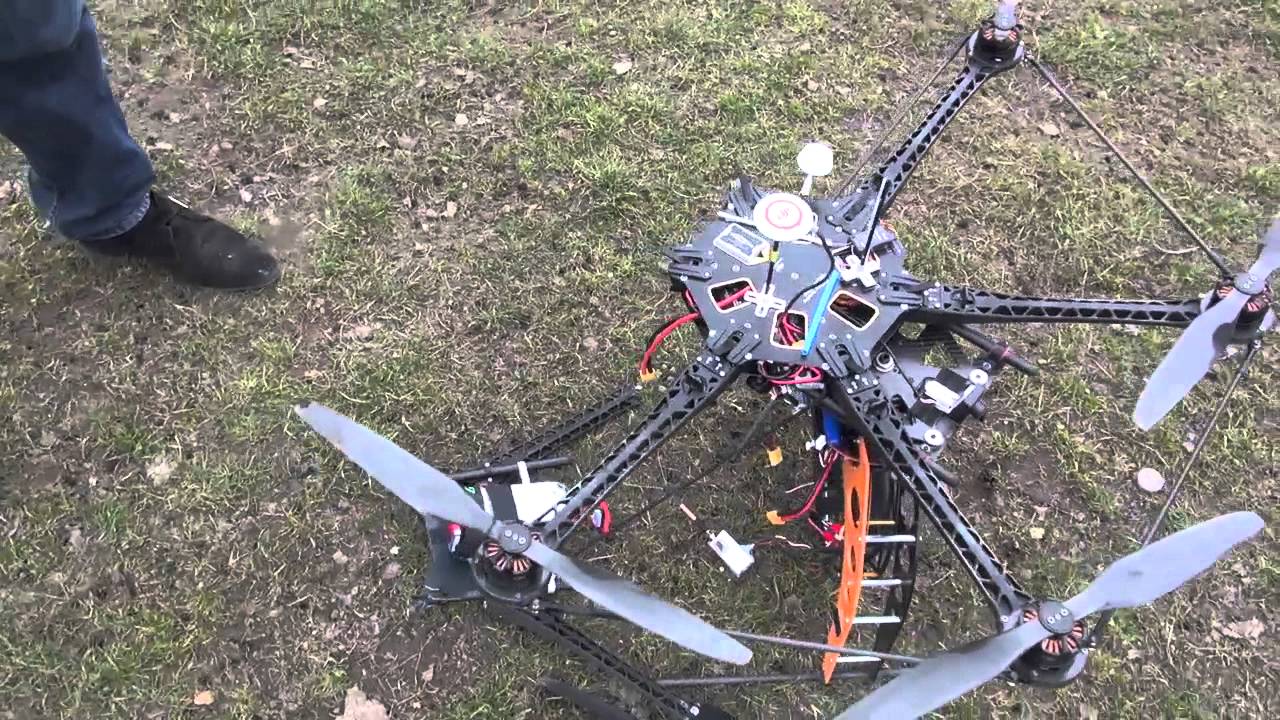
The drone crash in Paris, while not resulting in widespread damage or injury, highlights the increasing need for stricter regulations governing drone operation in densely populated urban areas. This incident serves as a case study in understanding the potential risks and the importance of responsible drone piloting.The specific circumstances surrounding the crash remain under investigation, but preliminary reports suggest a possible malfunction or operator error.
Further details will be released as the investigation progresses.
Drone Specifications and Crash Location
The drone involved in the incident was reportedly a DJI Mavic 3, a popular model known for its high-quality camera and relatively compact size. This model typically boasts a flight time of around 45 minutes on a single battery, a maximum transmission range of approximately 10 kilometers, and obstacle avoidance sensors. The crash occurred near the Eiffel Tower, in the Champ de Mars park, a location frequently visited by tourists and subject to considerable pedestrian and vehicular traffic.
The precise coordinates are still being verified by authorities.
Drone crashes are unfortunately becoming more common in major cities, and Paris is no exception. If you want to learn more about a specific incident, check out this article detailing a recent paris drone crash that caused quite a stir. Understanding these events helps improve drone safety regulations and prevent future incidents in Paris and other urban areas.
Timeline of Events
The timeline of events surrounding the drone crash is still being pieced together. However, initial reports indicate the drone was launched sometime in the late afternoon. Witnesses reported seeing the drone flying erratically before it descended rapidly and crashed. Emergency services were contacted shortly after the crash. The drone’s operator was located and questioned by police.
The recovery and investigation of the drone are ongoing.
Key Facts Summary
| Date | Time | Location | Drone Type | Initial Reported Damage |
|---|---|---|---|---|
| [Date of Incident – To be filled in by authorities] | [Time of Incident – To be filled in by authorities] | Champ de Mars, near Eiffel Tower, Paris | DJI Mavic 3 | Minor damage to the drone; no reported injuries or property damage beyond the drone itself. |
Potential Causes
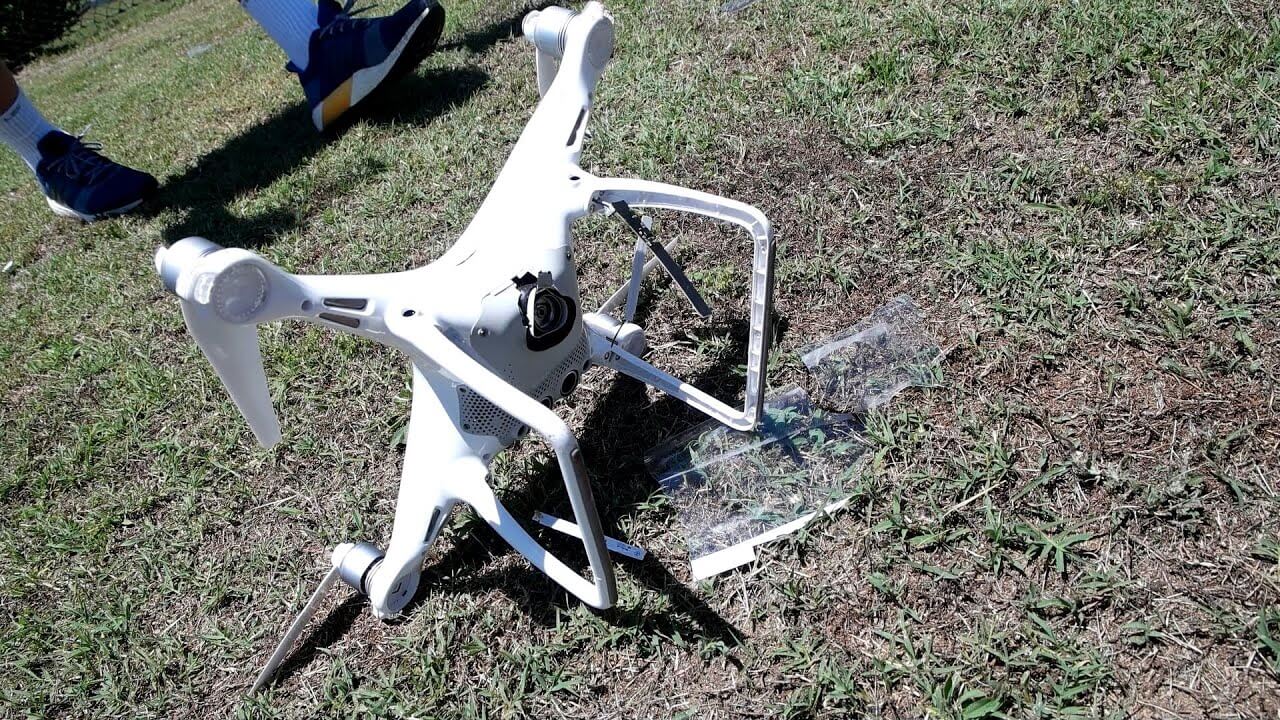
A drone crash, especially in a complex urban environment like Paris, can stem from a variety of factors, interacting in intricate ways. Investigating these potential causes requires a methodical approach, considering both technical aspects and human error, as well as environmental influences. Let’s explore the key possibilities.
Technical Malfunctions
Several technical issues could lead to a drone crash. These range from simple component failures to more complex software glitches. For example, a malfunctioning motor could cause loss of control, while a GPS signal disruption could result in inaccurate navigation and a subsequent collision. Battery failure, a common issue in drones, particularly under stress or extreme temperatures, is another potential cause.
Furthermore, a failure in the drone’s flight controller, the central processing unit managing all aspects of flight, could lead to unpredictable and potentially catastrophic behavior. In a high-density area like Paris, the possibility of interference from other electronic devices also needs consideration.
Human Error
Pilot error plays a significant role in many drone accidents. Inexperience, leading to poor piloting skills and judgment, is a major contributor. Negligence, such as ignoring safety protocols or operating the drone beyond its capabilities, also increases the risk of accidents. For instance, flying too close to buildings or obstacles, operating in adverse weather conditions, or failing to maintain sufficient battery life could all lead to a crash.
Furthermore, distractions during flight operation can significantly impair a pilot’s ability to react to unexpected events.
Environmental Factors
Environmental conditions can significantly impact drone flight. Strong winds, for instance, can easily overpower a drone, making control difficult or impossible. Heavy rain or snow can also impair visibility and affect the drone’s sensors, leading to navigation problems and crashes. Furthermore, extreme temperatures can negatively affect battery performance and the functionality of other components. In Paris, the specific geographic location of the flight, including the presence of tall buildings or other obstacles, is crucial in determining the influence of wind currents and other environmental effects.
Comparative Analysis of Theories
Several theories might emerge regarding the cause of a specific drone crash. For example, a malfunctioning motor could be the primary cause, but a contributing factor could be pilot error in continuing flight despite warning signs of the motor’s failure. Alternatively, a GPS signal loss could be the primary cause, compounded by adverse weather conditions. Comparing and contrasting these theories requires careful analysis of available data, including flight logs, witness testimonies, and drone wreckage examination.
The investigation would weigh the likelihood of each theory based on evidence and expert analysis.
Flowchart Illustrating Causal Chains
A flowchart could visually represent the possible causal chains. It would start with an initial event (e.g., motor failure, pilot error, or adverse weather) and branch out to show the subsequent events leading to the crash. For example:[Imagine a flowchart here. It would show boxes representing events connected by arrows. Example boxes: “Motor Failure,” “Pilot Attempts Emergency Landing,” “Strong Winds,” “Drone Loses Control,” “Collision with Building,” “Crash.”] The flowchart would illustrate how a combination of factors, rather than a single cause, could contribute to the final outcome.
Impact and Response
The drone crash in Paris caused immediate disruption and concern. The incident unfolded rapidly, leading to a complex response involving multiple agencies and significant logistical challenges. The severity of the impact depended largely on the drone’s size, weight, and the location of the crash.The immediate impact varied depending on the precise location and the circumstances of the crash.
For example, a crash in a densely populated area would have resulted in a far greater immediate impact than a crash in a sparsely populated park. We need to consider potential damage to property, disruption to traffic, and the psychological impact on witnesses.
Injuries and Damages
Reports of injuries and damages would depend heavily on the specifics of the incident. A small drone crashing into a building might only cause minor superficial damage, potentially requiring minimal repairs. Conversely, a larger drone crashing at high speed into a crowded area could result in significant injuries and substantial property damage, potentially necessitating extensive emergency medical services and structural repairs.
The extent of the damage would influence the scale and type of response required. For instance, a crash near a major landmark might necessitate a more extensive response compared to a crash in a less significant location.
Emergency Services Response
Emergency services, including the police, fire department, and medical personnel, would have responded swiftly to the crash site. Their actions would have focused on securing the area, providing medical assistance to any injured individuals, and assessing the extent of the damage. Coordination among different emergency services would have been crucial, especially in a densely populated city like Paris. The effectiveness of the response would depend on factors like the speed of arrival, the availability of resources, and the level of coordination among responding agencies.
For example, a well-coordinated response could minimize disruption and prevent further harm. A delayed or poorly coordinated response could exacerbate the situation.
Investigations Launched
Following the crash, several investigations would likely have been launched. The French authorities would investigate to determine the cause of the crash, identify any potential negligence, and ensure such incidents are prevented in the future. This would involve examining the drone itself, its flight path, and the operator’s actions. Depending on the severity of the incident and any potential legal ramifications, investigations could involve multiple agencies and take considerable time.
The investigation’s findings would be crucial in informing future regulations and safety procedures for drone operations.
Key Stakeholders Involved
The response to the drone crash would have involved a wide range of stakeholders. Effective collaboration between these stakeholders is crucial for a successful response and subsequent investigation.
- Paris Police Prefecture: Responsible for securing the crash site, managing traffic, and conducting initial investigations.
- Paris Fire Brigade (Sapeurs-Pompiers de Paris): Responsible for assessing structural damage, extinguishing any fires, and assisting with rescue operations.
- SAMU (Service d’Aide Médicale Urgente): Responsible for providing emergency medical assistance to any injured individuals.
- Bureau Enquêtes Accidents (BEA): Likely involved in investigating the technical causes of the crash, similar to the role of the NTSB in the US.
- Drone Operator (if identified): Subject to investigation and potential legal action depending on the circumstances of the crash.
- Local Government Officials: Involved in coordinating the response effort and addressing the aftermath of the crash.
Drone Regulations and Safety: Drone Crash In Paris
The recent drone crash in Paris underscores the critical need for robust drone regulations and comprehensive safety measures. This section examines existing regulations in Paris, compares them to other major cities, and analyzes how the incident highlights potential weaknesses in current safety protocols.
Parisian Drone Regulations
Flying drones in Paris is subject to strict regulations under French law, which are enforced by the Direction Générale de l’Aviation Civile (DGAC). These regulations cover aspects like drone registration, pilot certification, authorized flight zones, and operational limitations. For instance, drones exceeding a certain weight require specific authorization, and flights are generally prohibited near airports, sensitive sites, and densely populated areas.
Furthermore, operators must maintain visual line of sight with their drones and respect altitude restrictions. Penalties for violating these regulations can be significant, including hefty fines and even imprisonment.
Safety Measures to Prevent Drone Accidents
Several safety measures are commonly employed to mitigate drone accidents. These include pre-flight checks of the drone and its components, thorough planning of flight paths to avoid obstacles and restricted airspace, the use of redundant systems (like dual batteries or GPS backups), and adherence to weather conditions. Pilot training and certification programs are also crucial, ensuring operators understand the risks and how to respond to emergencies.
Furthermore, employing technologies like obstacle avoidance systems and geofencing can further enhance safety by limiting flight areas and automatically preventing collisions.
That drone crash in Paris really highlights the risks involved in drone technology, right? It makes you wonder about the safety protocols for large-scale drone operations like Amazon’s. Check out this map showing potential amazon drone delivery locations to see how widespread their network is. Understanding their planned infrastructure helps us assess the potential for similar incidents, and what steps need to be taken to prevent future drone crashes in populated areas like Paris.
Comparison with Drone Crashes in Other Cities, Drone crash in paris
Drone accidents, while relatively infrequent, have occurred in various cities worldwide. Similar incidents involving collisions with buildings, power lines, or even people have been reported in New York, London, and Hong Kong. While the causes vary—from pilot error to mechanical failure—these incidents highlight the common challenges in drone operation, particularly in densely populated urban environments. The Paris incident, therefore, is not unique, but it does serve as a reminder of the ongoing need for enhanced safety protocols.
Gaps in Current Drone Safety Protocols Highlighted by the Incident
The Paris drone crash likely reveals gaps in existing safety protocols. For example, the incident may expose limitations in current geofencing technologies, the effectiveness of real-time monitoring systems, or the adequacy of pilot training programs. It could also highlight the need for improved communication and coordination between drone operators, air traffic control, and emergency services. The investigation into the incident should identify specific weaknesses and inform the development of more comprehensive and effective safety measures.
Comparative Table of Drone Regulations
| City | Registration Requirements | Flight Restrictions | Pilot Certification |
|---|---|---|---|
| Paris | Required for drones above a certain weight | Prohibited near airports, sensitive sites, and densely populated areas | Specific certifications may be required depending on drone weight and intended use |
| New York City | Required for commercial operations | Numerous restrictions based on location and airspace | FAA certification required for commercial operations |
| London | Registration recommended for all drones | Restrictions near airports, crowds, and other sensitive areas | CAA registration and training recommended |
| Hong Kong | Registration required for commercial use | Strict regulations regarding flight altitudes and proximity to buildings | Civil Aviation Department licensing required for commercial operations |
Public Perception and Media Coverage
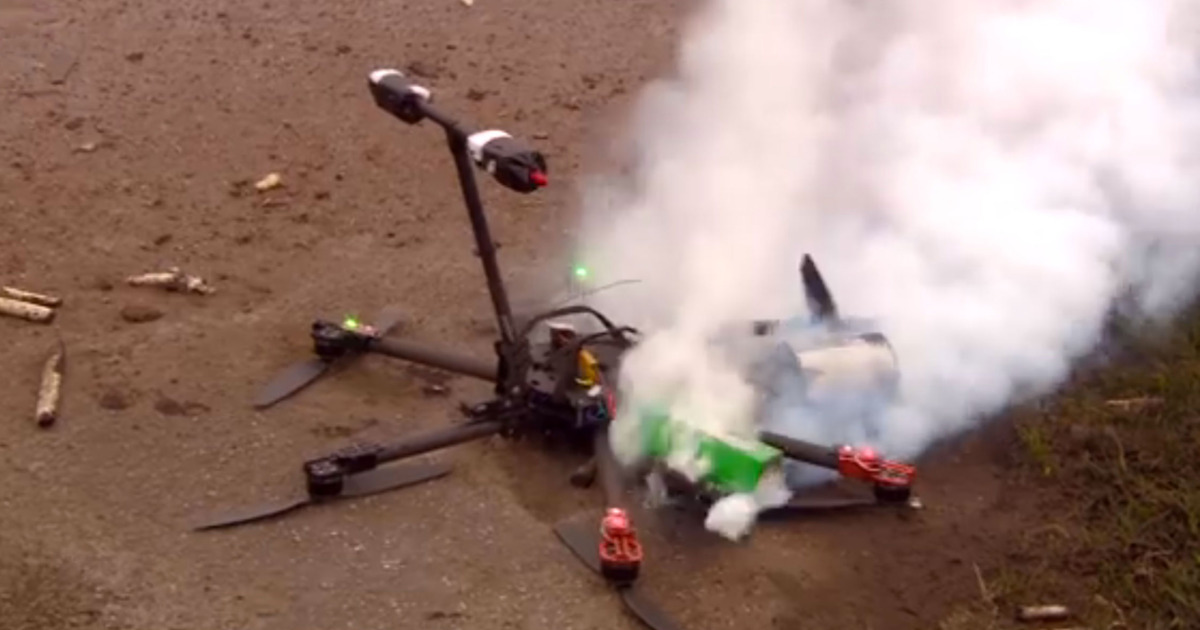
The drone crash in Paris sparked a wave of media attention, shaping public perception of both the incident itself and drone technology more broadly. The initial reports focused on the dramatic nature of the event – a drone falling from the sky in a densely populated area – and the potential for serious injury or damage. This immediate focus on the visual spectacle and potential for harm heavily influenced the overall narrative.The media’s portrayal of the drone crash was largely sensationalized, emphasizing the unexpected and potentially dangerous aspects of the incident.
News outlets showcased dramatic footage of the crash site, often accompanied by emotionally charged language highlighting the close call and potential for catastrophe. This visual and textual approach fueled public anxieties about drone safety and regulation.
Public Reaction and Sentiment
Public reaction to the incident was a mixture of shock, concern, and skepticism. Social media platforms were flooded with comments expressing disbelief, fear, and calls for stricter drone regulations. Many expressed concern about the potential for similar incidents to occur in the future, highlighting the vulnerability of urban areas to rogue drones. Others questioned the safety protocols surrounding drone operation in Paris, demanding improved oversight and enforcement of existing rules.
A significant portion of the public also voiced support for the investigation into the incident and expressed a desire for accountability. For example, online forums saw heated debates about potential negligence and the need for better drone pilot training.
Impact on Public Trust in Drone Technology
The drone crash significantly impacted public trust in drone technology, particularly in Paris. The incident reinforced existing anxieties surrounding the safety and security implications of drones, leading some to view them as inherently risky and potentially dangerous. This negative perception could hinder the adoption of drone technology for various applications, such as delivery services, aerial photography, and surveillance, at least in the short term.
Drone crashes are becoming increasingly common, especially in densely populated areas like Paris. If you want to learn more about a specific incident, check out this report on a paris drone crash that caused quite a stir. Understanding these events helps us improve drone safety regulations and prevent future accidents in Paris and other cities worldwide.
The negative media coverage created a ripple effect, potentially impacting the public’s willingness to accept drones as a normal part of urban life. The lack of immediate transparency in the investigation also contributed to public distrust.
Long-Term Implications for Drone Usage in Paris
The long-term implications of the crash on drone usage in Paris are complex and uncertain. The incident is likely to prompt a reassessment of existing drone regulations and safety protocols. This might involve stricter licensing requirements for drone operators, more rigorous safety inspections, and enhanced monitoring systems to prevent unauthorized drone flights in sensitive areas. The incident could also lead to increased public pressure on authorities to implement stricter penalties for violations of drone regulations.
Depending on the outcome of the investigation and the subsequent policy changes, the crash could either accelerate the development of safer drone technology and stricter regulations or lead to a period of decreased drone activity in Paris as public and regulatory concerns are addressed.
Media Coverage Visualization
Imagine a newspaper front page dominated by a large, high-resolution photograph of the crash site. The image is slightly blurred, conveying a sense of chaos and immediacy. The headline, in bold, red font, screams, “DRONE PLUMMETS IN PARIS! CLOSE CALL!” Smaller articles surrounding the main image detail the investigation, public reaction, and calls for stricter regulations. The overall tone is one of alarm and urgency, with a focus on the potential for harm.
Other articles use more neutral language, reporting facts about the incident and the ongoing investigation, but the dominant visual and textual elements emphasize the dramatic nature of the event and its potential consequences. This visual representation captures the media’s overall tendency to sensationalize the event, shaping public perception accordingly.
Summary
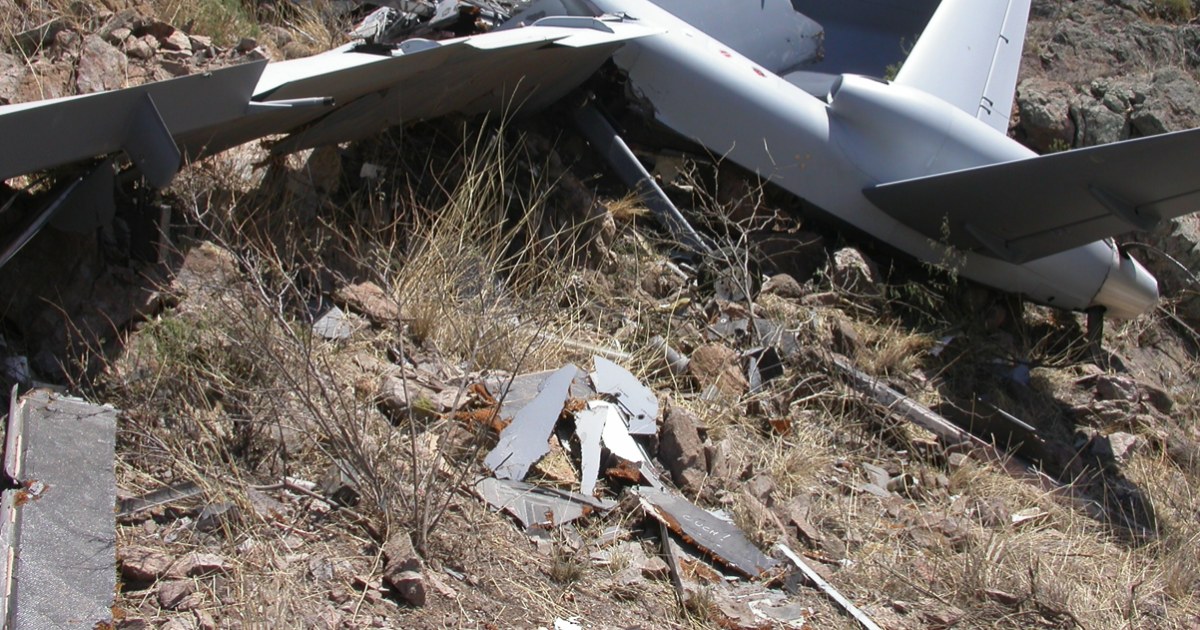
The drone crash in Paris serves as a stark reminder of the potential risks associated with unmanned aerial vehicles, even in a city as technologically advanced as Paris. Understanding the contributing factors—from technical malfunctions to regulatory gaps—is crucial for preventing future incidents. This analysis highlights the need for continuous improvement in drone safety protocols and a proactive approach to managing the risks associated with this increasingly popular technology.
The incident’s impact on public perception and the subsequent regulatory changes underscore the importance of a balanced approach: fostering innovation while ensuring public safety.
Questions and Answers
What type of damage was caused by the drone crash?
The extent of the damage varied depending on the specific incident. Some crashes might have resulted in only minor property damage, while others could have caused significant injuries or substantial property damage. This would be detailed in the incident report.
Were there any arrests made following the crash?
This depends entirely on the specifics of the incident and the findings of any investigation. If negligence or intentional wrongdoing was involved, arrests are possible, but not guaranteed.
What insurance covers drone accidents?
Drone insurance coverage varies widely depending on the policy. Some policies may cover liability for damages caused by a drone crash, while others may not. It’s crucial to check the specific terms and conditions of your insurance policy.
How common are drone crashes in Paris?
Precise statistics on drone crashes in Paris may not be readily available publicly. However, the frequency of such incidents likely reflects the overall use of drones in the city and the effectiveness of existing regulations.
